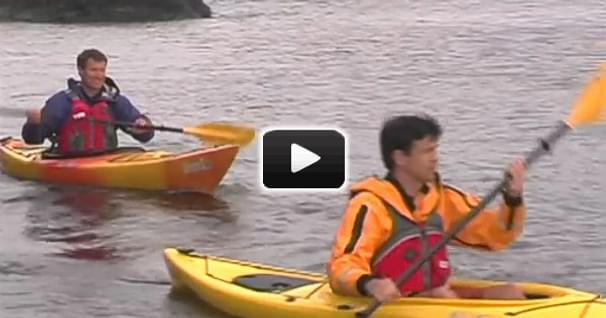Golden Rules of SUP
The golden rules of stand up paddleboarding are a set of rules that will help you paddle more efficiently, and also, help keep you safe while you're out on the water. To follow the golden rules you'll need to engage your core for all your strokes, wear a life jacket and leash, and know where to go.
Engage Your Core
Engaging your core muscles for all strokes will help you paddle the most effectively and efficiently. Which means you'll be able to spend longer on the water, and you'll be better equipped to deal with challenging conditions. Using your core muscles involves rotating your hips and your shoulders. When you're wound up like this, and you take a stroke, you're not going to be using your arms, but you're going to be unwinding and using more muscle groups in your core. This is going to help you paddle more efficiently, paddle longer, and also paddle safely, because you're using larger muscle groups.
Wear A Life Jacket and Leash
The second golden rule is to wear a life jacket and leash when you stand up paddle. In fact, paddleboards are considered a vessel by the U.S. Coast Guard, which means that you need to have a life jacket and whistle on hand if you're outside of a swimming or surfing area. If you can't swim, it's definitely a great idea to wear an inherently buoyant life jacket. And there are some great, paddle-specific models on the market that are comfortable to wear and won't restrict your movements. If you are a swimmer, you can consider an inflatable life jacket. The most popular inflatable life jackets for stand up paddling are belt packs which are worn around your waist, but they're also available as vests. If you're going to use a belt pack, they're best worn in front so they can be easily and quickly inflated if needed.
Your board should also be considered an important piece of safety gear, which is why a leash is such a key piece of safety equipment, because it connects you to your board with a strap. Unless, you're specifically paddling whitewater rapids or moving water rivers where your leash can become snagged on a rock, a branch, or even on the shore, it's very important to wear your leash. Because if you ever do fall off, it's amazing how quickly wind and current can separate you from your board.
Know Where to Go
The third and final golden rule of stand up paddling is to know where to go. The best places for stand up paddling have protection from wind and waves, good access points for launching and landing, and minimum motorized boat traffic. As a general rule, if you venture into water that isn't protected from wind and waves, or if you travel further from shore than you can comfortably swim, you should be an experienced and self-reliant paddleboarder.
Related Articles
As the days get shorter and the weather gets colder, it becomes harder to get out and paddle and easier…
I'm sure you'll be happy to hear that kayaking is a remarkably safe sport. In fact, compared to most…
Hi, I'm Robert Stehlik with Blue Planet Surf. I wanted to talk a little bit about moving around on the…



